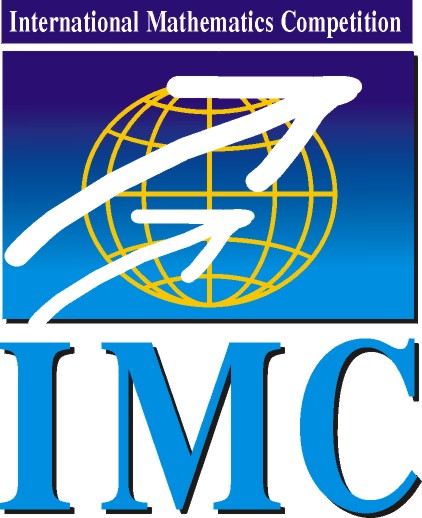
|
International Mathematics Competition
|
IMC 2024 |
| Information | Schedule | Problems & Solutions | Results | Contact |
IMC2023: Problems on Day 1
Problem 1. Find all functions \(\displaystyle f:\) \(\displaystyle \mathbb{R}\to \mathbb{R}\) that have a continuous second derivative and for which the equality \(\displaystyle f(7x+1) = 49f(x)\) holds for all \(\displaystyle x\in\mathbb{R}\).
Alex Avdiushenko, Neapolis University Paphos, Cyprus
Problem 2. Let \(\displaystyle A\), \(\displaystyle B\) and \(\displaystyle C\) be \(\displaystyle n\times n\) matrices with complex entries satisfying
\(\displaystyle A^2 = B^2 = C^2 \quad \text{and} \quad B^3 = ABC + 2I. \)
Prove that \(\displaystyle A^6 = I\).
Mike Daas, Universiteit Leiden
Problem 3. Find all polynomials \(\displaystyle P\) in two variables with real coefficients satisfying the identity
\(\displaystyle P(x,y)P(z,t)=P(xz-yt,xt+yz). \)
Giorgi Arabidze, Free University of Tbilisi, Georgia
Problem 4. Let \(\displaystyle p\) be a prime number and let \(\displaystyle k\) be a positive integer. Suppose that the numbers \(\displaystyle a_i=i^k+i\) for \(\displaystyle i=0,1,\ldots,p-1\) form a complete residue system modulo \(\displaystyle p\). What is the set of possible remainders of \(\displaystyle a_2\) upon division by \(\displaystyle p\)?
Tigran Hakobyan, Yerevan State University, Armenia
Problem 5. Fix positive integers \(\displaystyle n\) and \(\displaystyle k\) such that \(\displaystyle 2\leq k\leq n\) and a set \(\displaystyle M\) consisting of \(\displaystyle n\) fruits. A permutation is a sequence \(\displaystyle x=(x_1,x_2,\ldots,x_n)\) such that \(\displaystyle \{x_1,\ldots,x_n\}=M\). Ivan prefers some (at least one) of these permutations. He realized that for every preferred permutation \(\displaystyle x\), there exist \(\displaystyle k\) indices \(\displaystyle i_1<i_2<\ldots<i_k\) with the following property: for every \(\displaystyle 1\le j<k\), if he swaps \(\displaystyle x_{i_j}\) and \(\displaystyle x_{i_{j+1}}\), he obtains another preferred permutation.
Prove that he prefers at least \(\displaystyle k!\) permutations.
Ivan Mitrofanov, École Normale Superieur Paris
© IMC